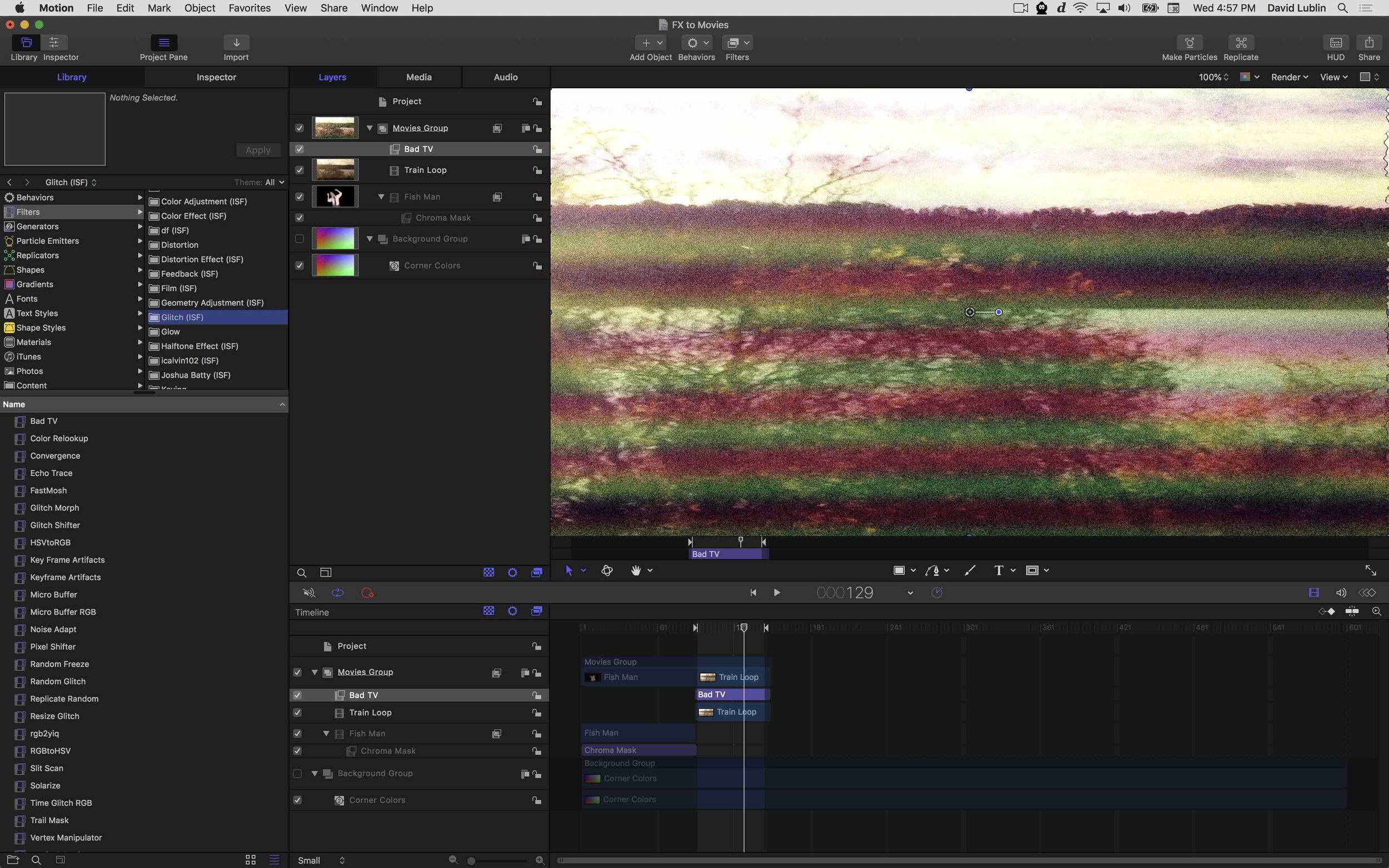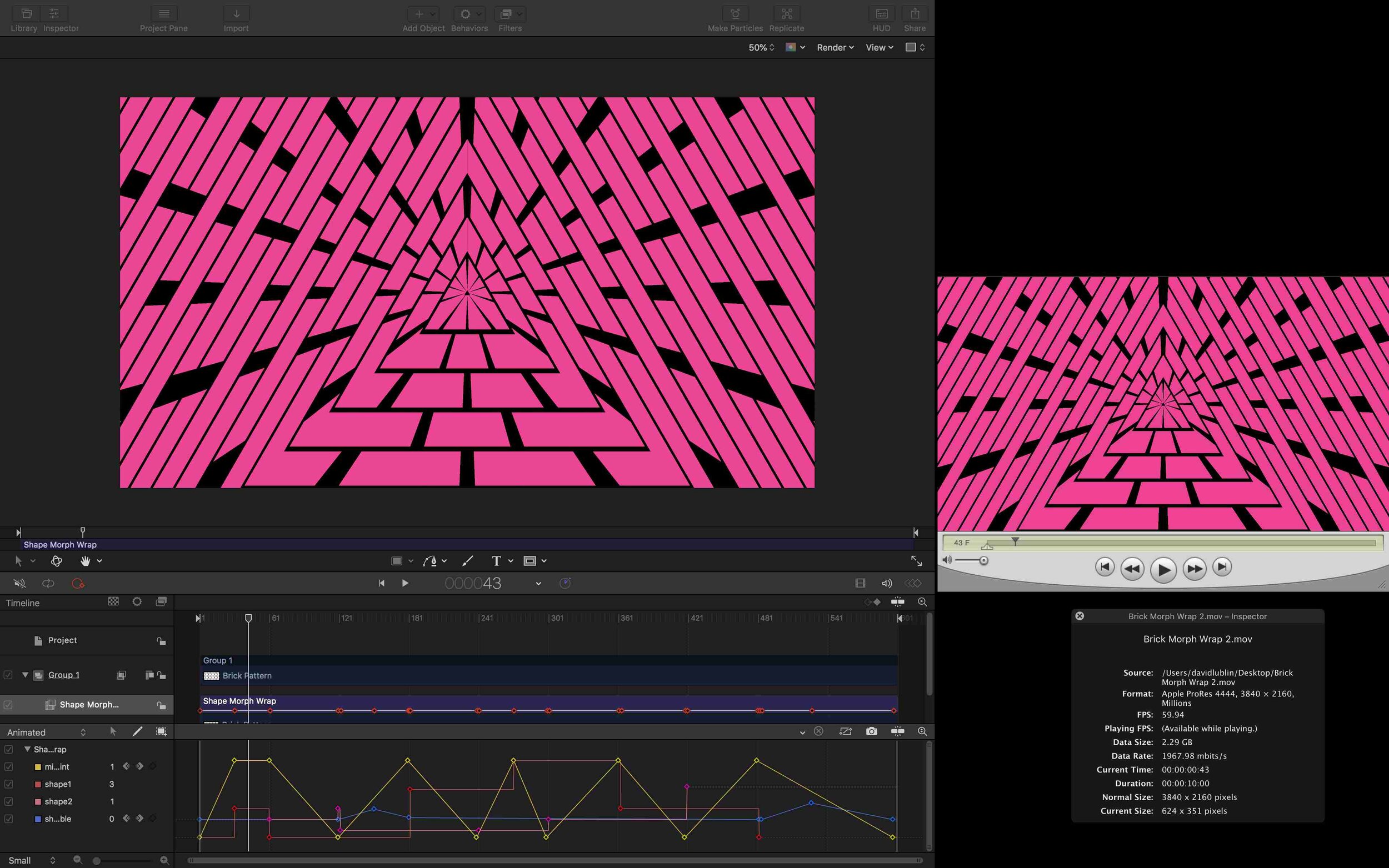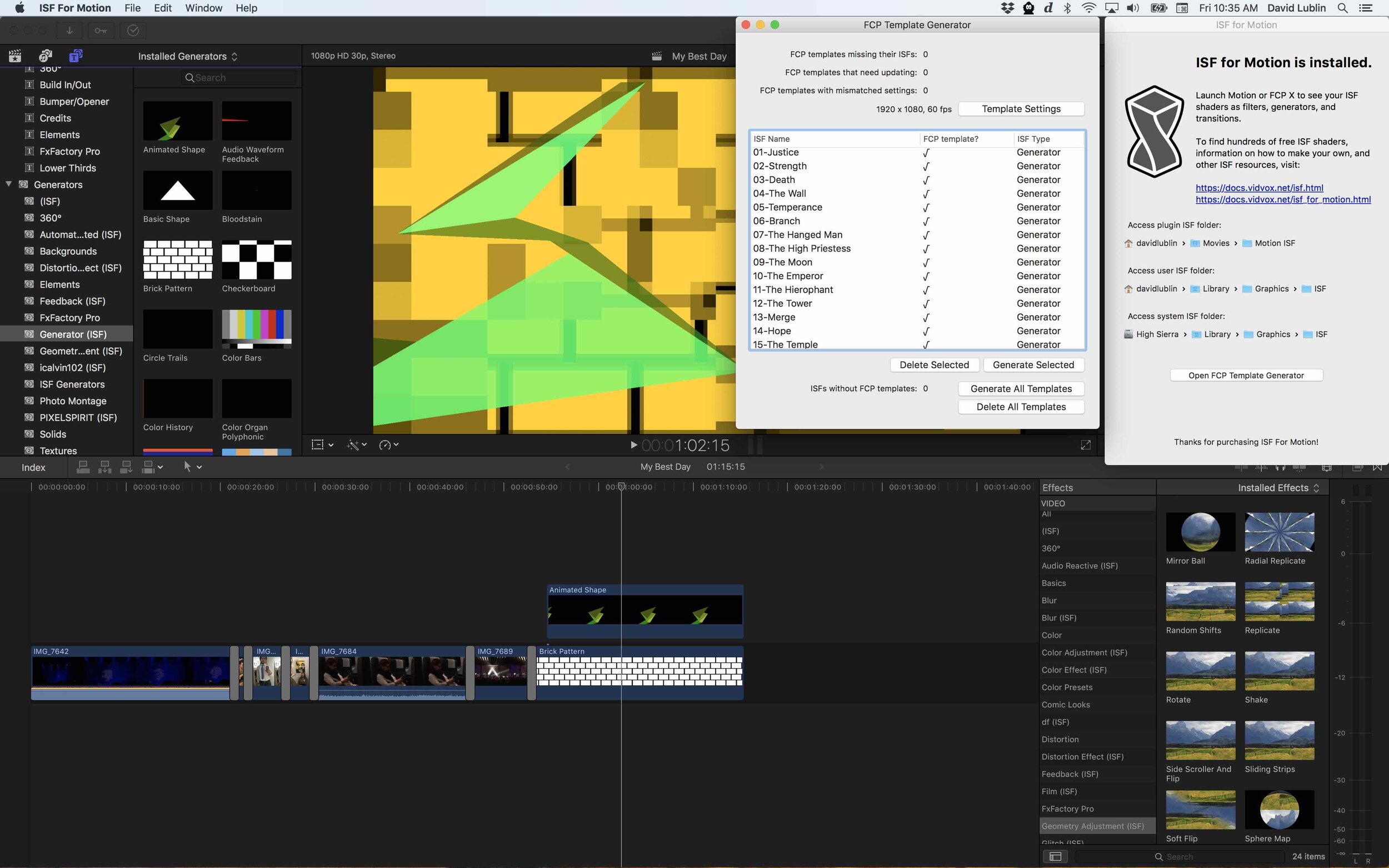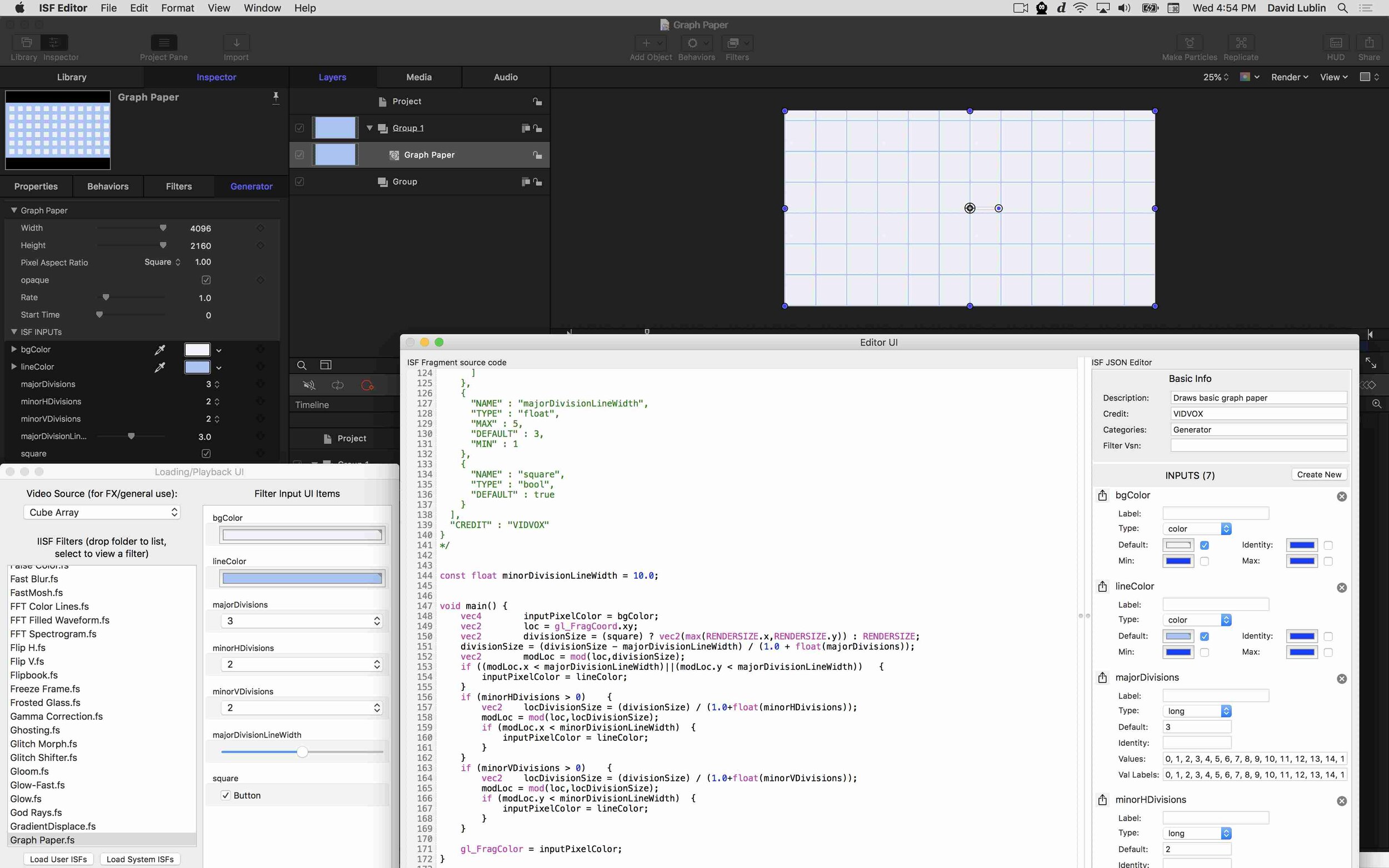As many of you know, a few years ago we released the https://www.interactiveshaderformat.com/ as a place where people could share their custom GLSL based generators and effects to use with VDMX and other software for live visuals. Today we are excited to announce the first major revision to the website, with a redesign to make it easier to find and create shaders.
Read MoreIntroducing ISF for Jitter
Today we are extra excited to announce an open source collaboration with the team over at Cycling74, creators of Max. Now all of the amazing ISF shaders that come with VDMX and on interactiveshaderformat.com can be used right alongside your other Jitter code using the jit.gl.isf object, available on Mac and Windows!
You can install jit.gl.isf directly from the Max package manager panel, accessible from the File menu. If you don’t already have any ISF shaders installed, also grab the free ISF Editor app for your appropriate platform. The free editor tool comes with the same standard set of 300+ generators, effects, and transitions we bundle with VDMX to get started with.
With this release Max joins the over a dozen apps and frameworks that support ISF as a standard for GLSL shaders. With ISF, there is no need to convert or translate code when moving between software. Write your generators and effects once, then use in Max, Motion, Final Cut Pro X, VDMX, on the web, and other video platforms. The specification includes conventions for working with multi-pass shaders with persistent frame buffers, allowing for the creation of complex compositions in a single easy to share file. The ISF documentation pages include detailed walkthroughs of the specification along with useful reference notes and a quick start for learning the basics of GLSL.
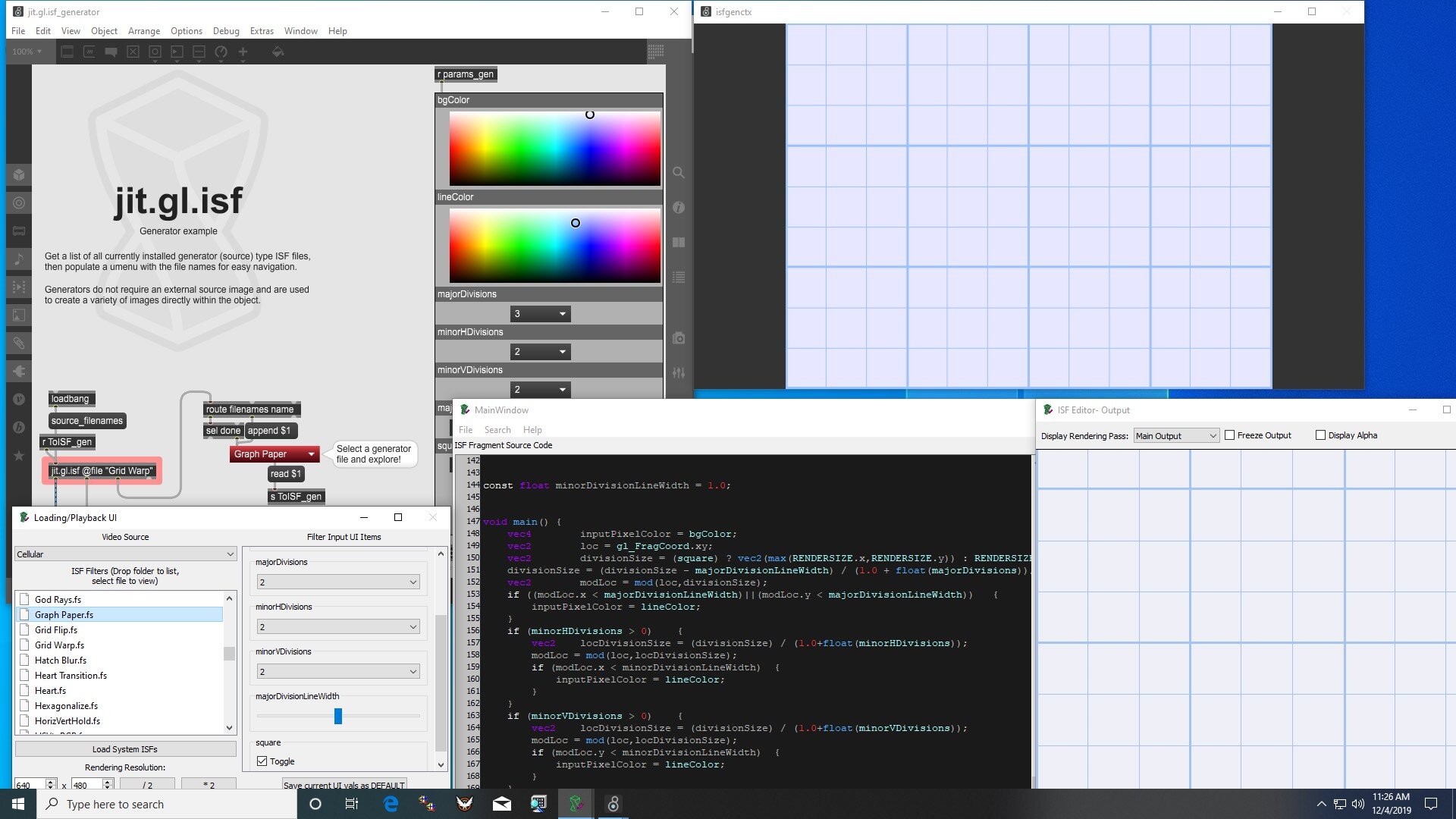
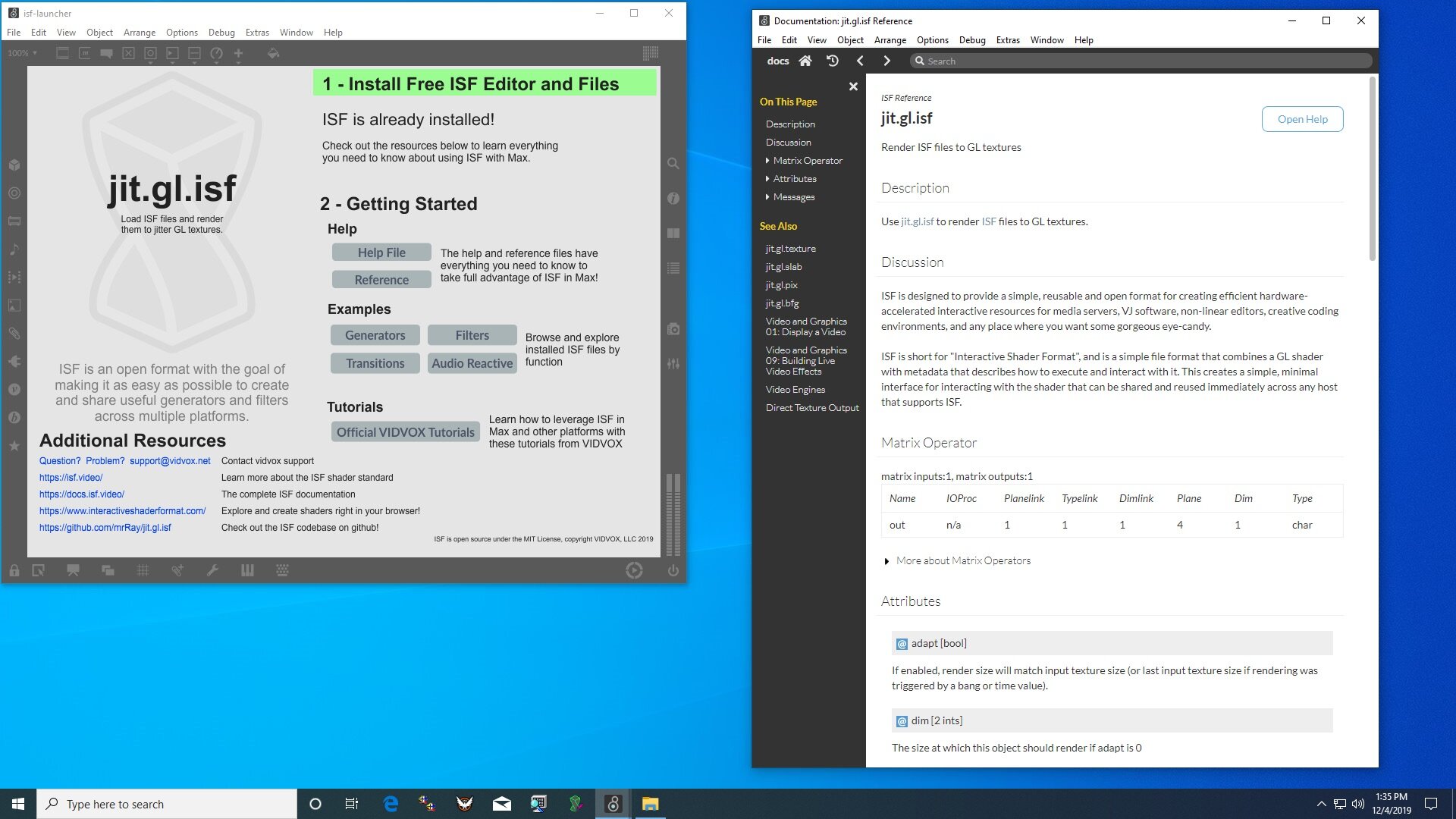
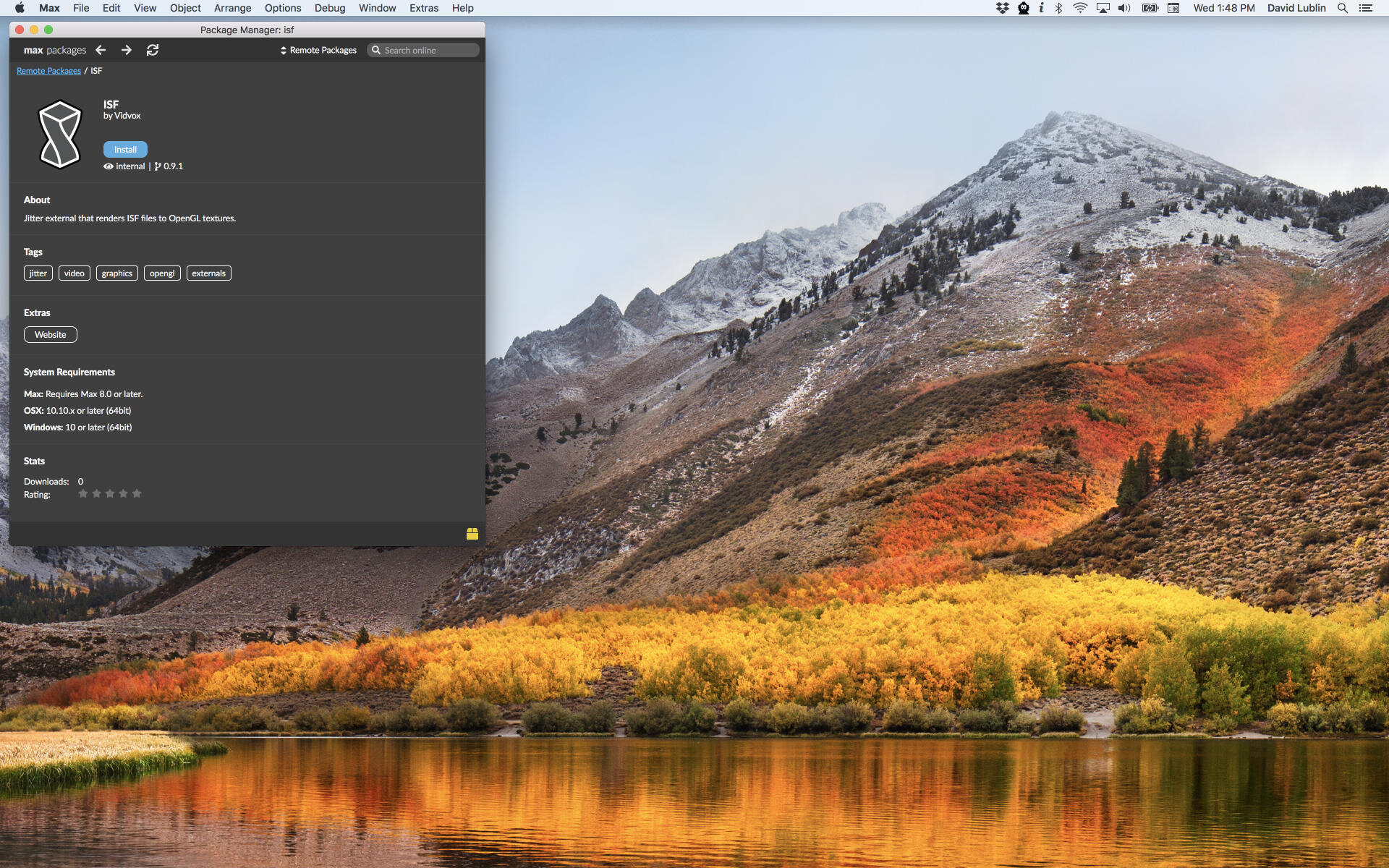
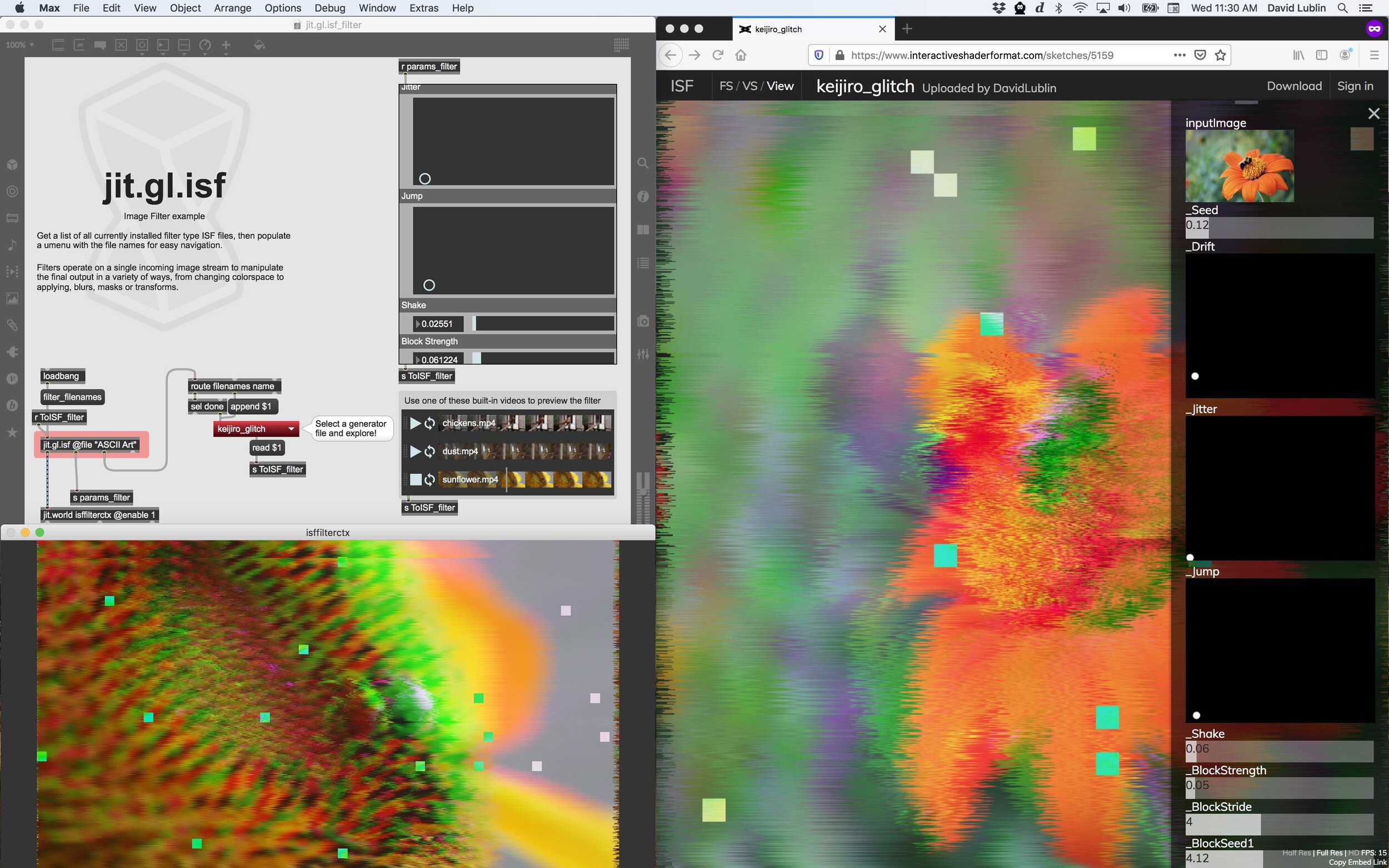
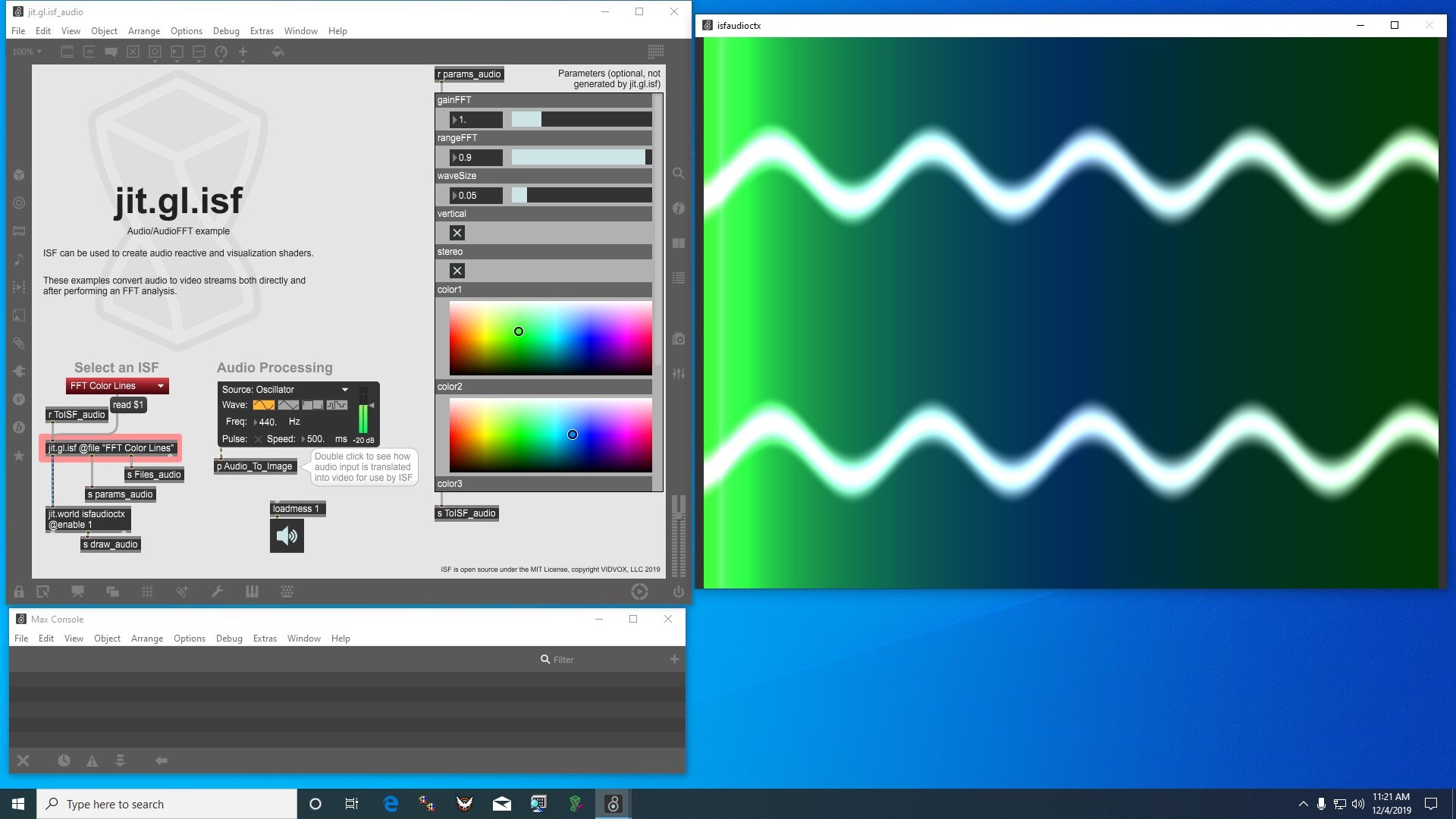
Want to learn more? Read more about it on the ISF for Jitter website, watch an introduction video tutorial, and visit the Max forums for more details from the Cycling74 crew. Developers curious to take a look under the hood can find the open source codebase in the jit.gl.isf repository. For the latest in ISF news, follow the @ISFVideo account on Twitter.
And don’t forget to check out some of our other tutorials describing techniques for using Max and VDMX together, such as using the OSCQuery Helper tool for simplifying OSC sync and sharing video streams via Syphon.
ISF for Motion and Final Cut Pro X now available in the Mac App Store!
Today we are excited to announce ISF for Motion, a new way to use the same suite of real-time video generators and effects that we include with VDMX inside of Motion and Final Cut Pro X!
The ISF for Motion FxPlug enables usage of GLSL shaders written in the ISF specification within Apple Motion and FCP X alongside their standard generators, effects and transitions, opening up a world of new possibilities where creative code meets your traditional motion graphics and editing workflows.
Download and install ISF for Motion from the Mac App Store
Read MoreAnnouncing VV Edu: A free and open source curriculum for teaching live visuals and VJing
Along with making great software and open source projects, one of the areas we have tried to focus on is creating educational materials to help visual artists at all levels help improve their craft. Over the last few years our website tutorials section has served as the main outlet for our various lessons, demonstrations and conversations of the various techniques used for all aspects of live visual performance.
Today we are extremely excited to announce that we are taking the next big step in our educational offerings, and as you might imagine, we’re doing it open source style: https://vidvox.github.io/vvedu
Read MoreNew VDMX Update With OSCQuery, NDI® send/receive, eGPUs and more!
Today we are excited to announce the release of a new update to VDMX that adds several major new features and some noteworthy smaller additions and improvements!
Read MoreIntroducing OSCQuery Protocol
One of the most useful techniques for artists working with audio and visual software is the OSC protocol for sending control information from one application to another. While MIDI is great for a lot of situation, OSC was designed to be more extensible and allow for a variety of different datatypes, greatly expanding the possibilities within the community of real-time digital art. Over the years the ecosystem of tools that support the protocol has grown and now we are excited to release a new extension to help the community take OSC to the next level.
The OSCQuery Protocol is an agreed upon specification that extends the base functionality of OSC to make it easier to construct impromptu or improvisational interfaces between different systems…
Read MoreVDMX and Ableton Link integration
Today we are extremely excited to announce that VDMX now has native support for Ableton Link, a new technology developed by Ableton that synchronizes musical beat, tempo, and phase across multiple applications running on multiple devices. By using Ableton Link musicians and visual artists who perform together can easily keep all elements of a show in sync.
Read MoreOpen Source At VIDVOX
In addition to VDMX and several related free utility applications, one of our major focuses at VIDVOX is open source software. We have found that open source code and open standards are especially important for creative communities such as ours where interoperability between tools is often crucial for artists to achieve their visions. We encourage other developers of creative technology and artists themselves to share their low-level knowledge and support the adoption of open standards in their work.
Below you can find links to some of the significant projects that we are particularly proud to maintain and sponsor.
Much of the low level code for VDMX can be found in the VVOpenSource project which is maintained by our own Ray Cutler. In particular you can find the code for our MIDI, OSC and OpenGL backends to use in your own Mac and iOS apps. This project also contains several example applications such as the OSCTestApp and MIDIviaOSC tools that are also useful for non-developers.
The Hap video codecs are an open standard for high performance movie playback originally created in collaboration with Tom Butterworth. Today Hap is supported cross-platform by over 20 different applications and creative coding environments.
Related to this, our free AVFBatchExporter Mac app utility for converting movies into Hap and other standard formats is also open source.
Interactive Shader Format (aka ISF) is an open format for GLSL based video generators and image filters that we created for use in VDMX. ISF based shaders now can be used in a handful of VJ softwares, as well as with OpenFrameworks and on the web. Developers looking to add ISF support to their Mac and iOS can applications can find example code in the ISFKit portion of VVOpenSource. Artists can get started with ISF using the online editor or Mac desktop editor.
In collaboration with several other developers, OSCQuery is an extension to the already popular OSC specification, the OSCQuery Protocol makes it possible for client applications to remotely browse a remote OSC address space. The intent of this goal is to provide baseline functionality that other developers may take advantage of to construct impromptu or improvisational interfaces for dynamic environments. Our open source implementation of OSCQuery is available for developers looking to support the protocol in their own software. This repository also contains several useful sample projects and helper tools such as ‘MIDI OSCQuery Helper’ and ‘OSCQuery Helper’ which can be used to enable OSCQuery capabilities in apps that already support MIDI or OSC.
The code for our FreeFrame plugin loader can be found in the VVFFGL project. This framework was commissioned by VIDVOX and written by vade and bangnoise.
We are proud sponsors of the Syphon framework for video sharing between applications on OS X. The introduction of Syphon into our community has reshaped what is possible for visual artists working on the Mac and we are looking forward to continued support of its future development.
Lastly, there are several open source libraries that we are unaffiliated with but do make use of in our own work. We'd like to additionally thank developers like Mike Ash, Dave DeLong, John Engelhart, the libartnet team and the countless others who have shared their code online for us to benefit from.
GifToSyphon: Free Giphy Search To Syphon Tool for Mac VJs
Download GifToSyphon (requires Mac OS X 10.9.5 or later)
GifToSyphon is a free Mac utility that combines two things that VJs love – Animated GIFs and Syphon.
Giphy + Syphon = Instant kittens in your VJ set
Powered by the awesome Giphy search engine, a Mac VJ with an Internet connection can now instantly pull tagged GIFs from a huge online library and use them directly in their favorite Syphon enabled video application.
When not connected to the net GifToSyphon can also still use images from its local cache or using any of your own animated GIF files. These downloaded GIFs can also be loaded into most VJ software for remixing alongside your other media files.
For a quick introduction to using GifToSyphon with VDMX watch this new video tutorial:
(using the 4 channel mixer example via the Templates menu if you're trying to reproduce at home)
Features:
For those who are interested in seeing how GifToSyphon works behind the scenes we've also open sourced the code on GitHub: https://github.com/dlublin/GifToSyphon
Lastly a huge thanks to Giphy team and community for letting us access their repository of GIFs!
Hap Codecs now working in 64-bit AVFoundation
Hey all!
We wanted to make this an especially Hap-Hap-Happy Holiday for all Mac VJs (not just the VDMX-ers) and what better way is there than with another awesome open source code release for the hardware accelerated Hap video codecs?
It looks like 2015 will be the year that Mac VJs move to 64-bit and to help make that a reality for everyone we've updated our GitHub repositories to include new source code and documentation for developers to use the Hap video codecs with AVFoundation in their 64-bit applications.
Developers can find the new repository here: https://github.com/Vidvox/hap-in-avfoundation
Hap playback and encoding through AVFoundation works with the same classic .mov wrapper so all of your old Hap encoded movie files will work just the same, and likewise any new Hap movies created will be backwards compatible with older 32-bit application (and cross-platform with Windows).
Hap 64- bit example app running AVFoundation in Yosemite.
As a recap on the technical details and history of the move from 32 to 64-bit processing, for a long time on the Macintosh most video processing software has relied on using a technology from Apple called QuickTime for movie playback. Over the last few years Apple has been trying to transition everyone to use their new modern movie playback engine known as AVFoundation which has several advantages, but was also lacking in certain pro capabilities needed for fully featured real-time video processing applications like VDMX.
In particular one big limitation for VJs was the lack of support for 3rd party pro video codecs such as Hap...
Thankfully as of a few weeks ago it became possible to use Hap in AVFoundation, taking care of our big stumbling block on making VDMX a native 64-bit application.
Though we still have a more work to do to fully realize the larger goal of having a 64-bit native version of VDMX, including further optimization and bug testing, we wanted other developers stuck on this same problem with their apps to be able to get their software working with Hap as soon as possible.
We'll be posting more information and details about the next round of VDMX updates in a few weeks so stay tuned for more announcements!
So once again, happy holidays to all and looking forward to seeing you in 64-bit land in the new year!
- Dave & Ray
ps. Devs don't forget that you can also use the Hap codecs on Windows too!
The Hap Video Codecs, Now Available For Windows!
[Update July 2018 – there is a new website with the latest information about the HAP video codecs: http://hap.video]
Front Pictures pushes the limit, 26 layers of Hap Q on 52 projectors played from Touch Designer on Renaissance
Last year in a collaboration Tom Butterworth we had the pleasure of sharing a powerful new set of open source video codecs called Hap with the Mac real-time video community. The goal of Hap was to serve a broad audience with the same need to push more pixels, benefiting everyone from show designers on expensive media servers handling 2k and 4k arrays to weekend VJs now able to playback multiple HD streams off a laptop.
One thing we've learned about artists in our time writing video performance software is that in the real world they take advantage of all kinds of tools for different projects and to create their unique visual style. With every new application that adds native support for the Hap suite, now counting at more than a dozen, it makes it easier to get the best performance regardless of what software is used to get a job done.
This mixing and matching of software isn't limited to a single platform and today we're extremely excited to announce that the GPU accelerated codec of choice on the Mac is now officially supported on Windows!
As of this announcement, the Hap video codec family can now be natively used on Windows in TouchDesigner, OpenFrameworks (via ofxHapPlayer), Jitter (via jit.gl.hap), DirectShow and Unity (via RenderHeads AVProQuicktime), with support coming very soon to D3 Media Servers and the Isadora programming environment.
To celebrate, we've updated the Hap homepage to include our new photo gallery of the various applications and frameworks that have adopted the format on both platforms. The homepage is also the place to check out how Hap compares to other commonly used codecs for live visuals.
The installers for the QuickTime Hap codecs for Mac and Windows can be found on the downloads page: https://github.com/vidvox/hap-qt-codec/releases/
(remember that the application you're using will also need to natively support Hap!)
Mac and Windows developers who are interested in learning more about Hap can visit the GitHub project page for technical details and sample code: https://github.com/vidvox/hap
Thanks again to all of the developers who have helped build this Hap-py community, and infinite praise for the infamous Tom Butterworth who continues to make it all Hap-pen.

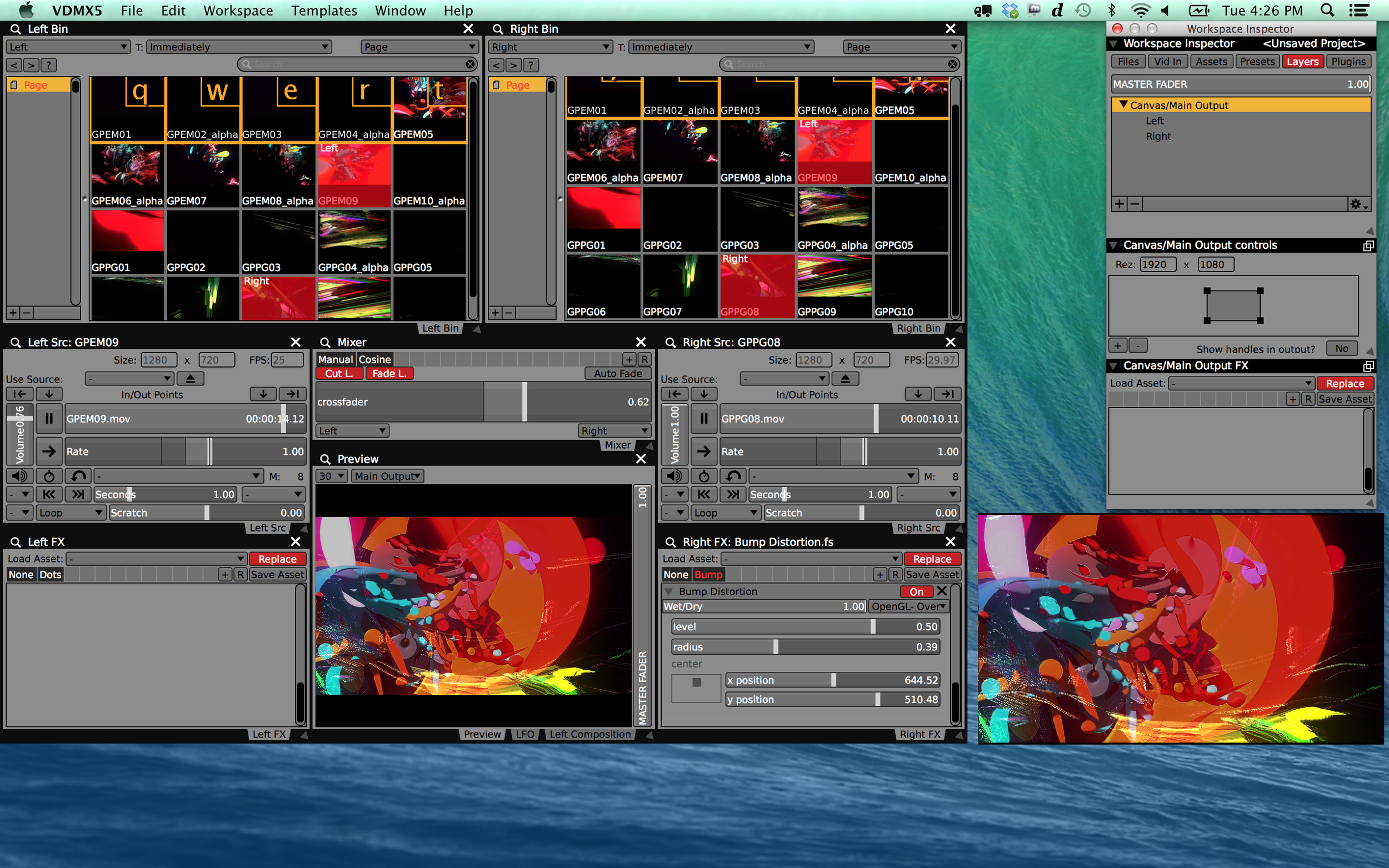

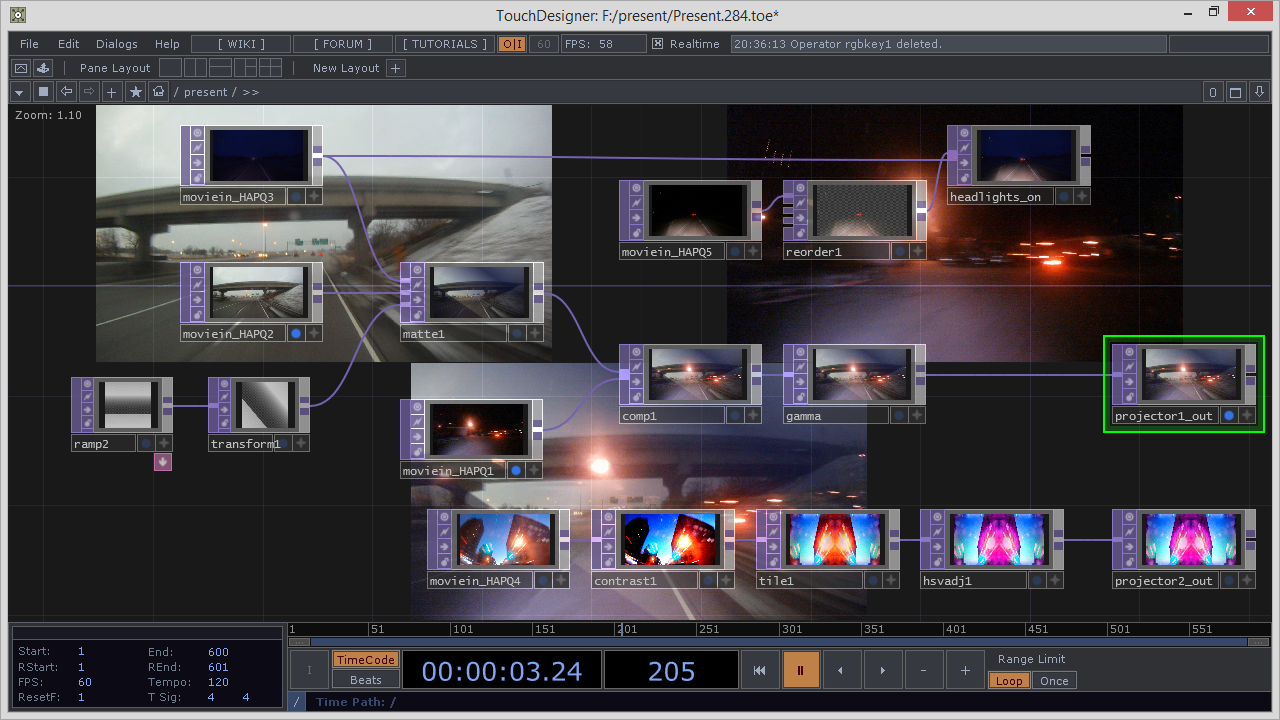
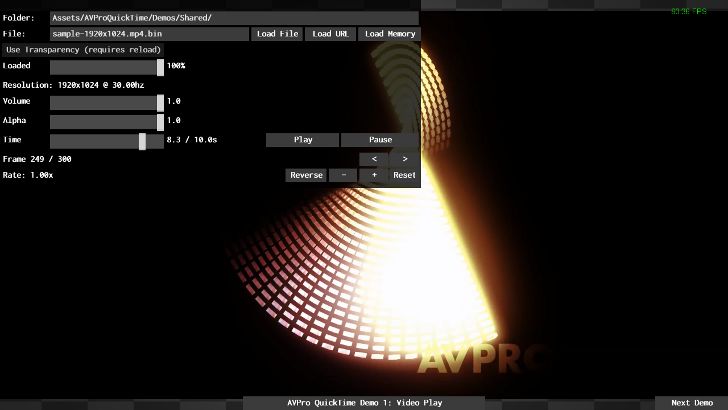



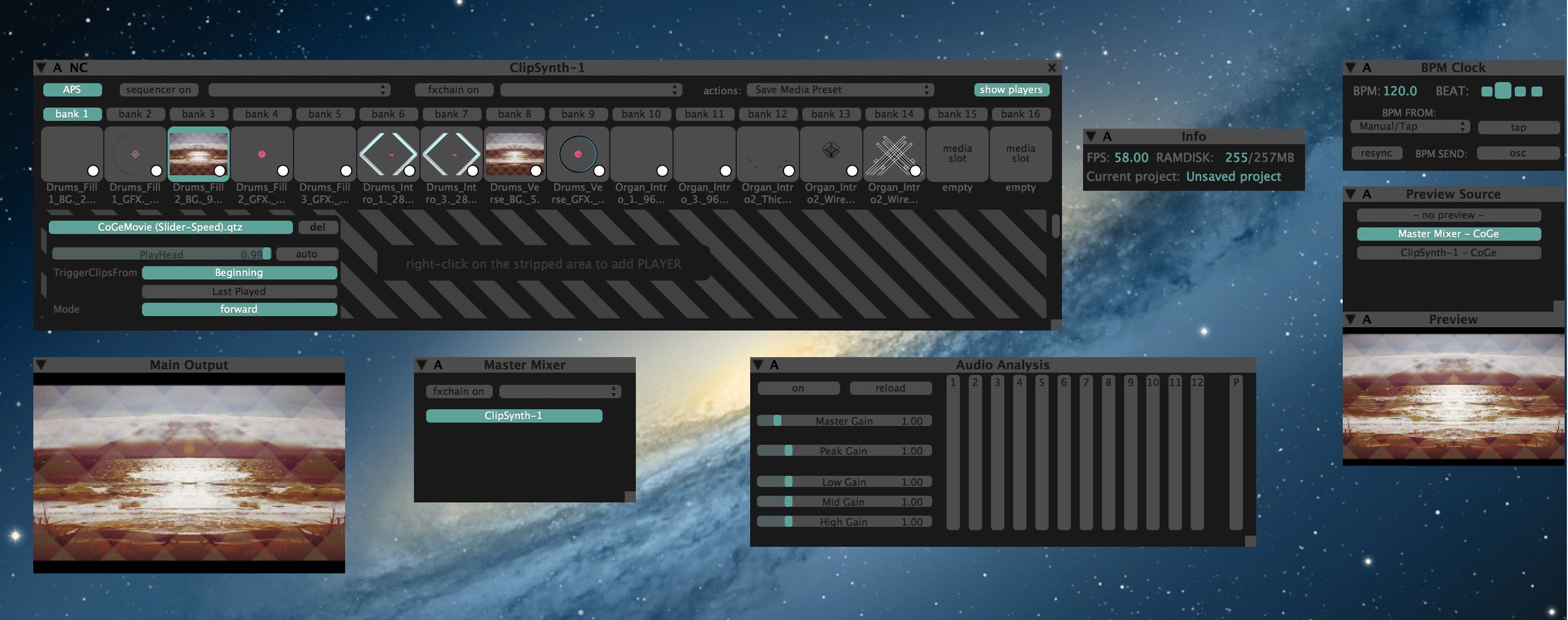

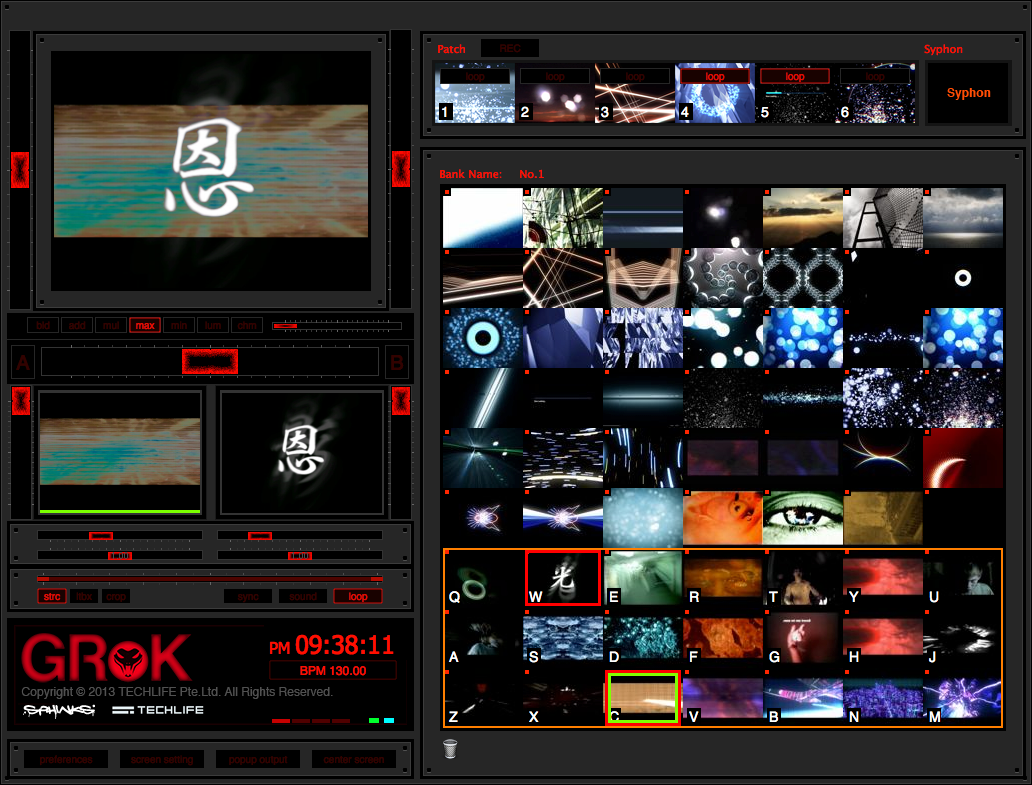
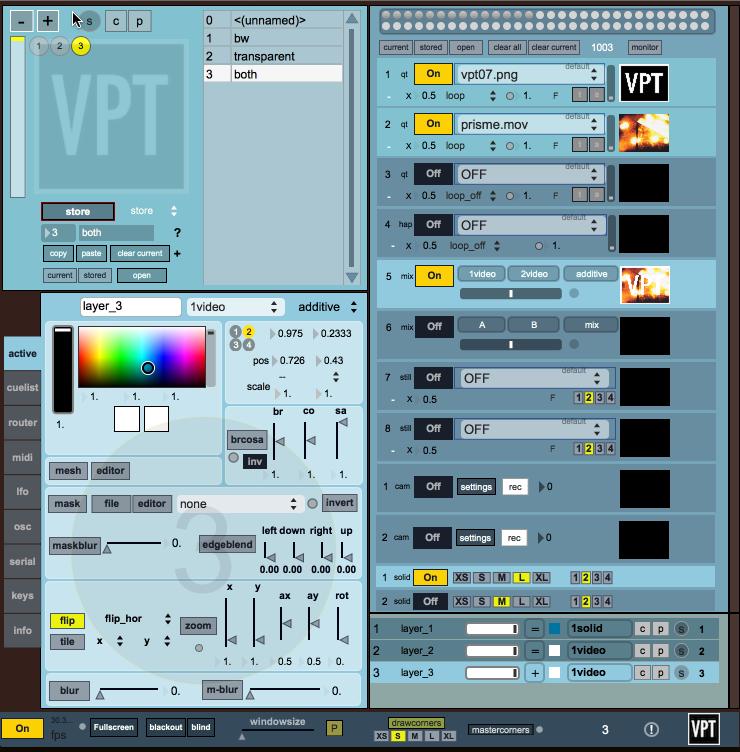
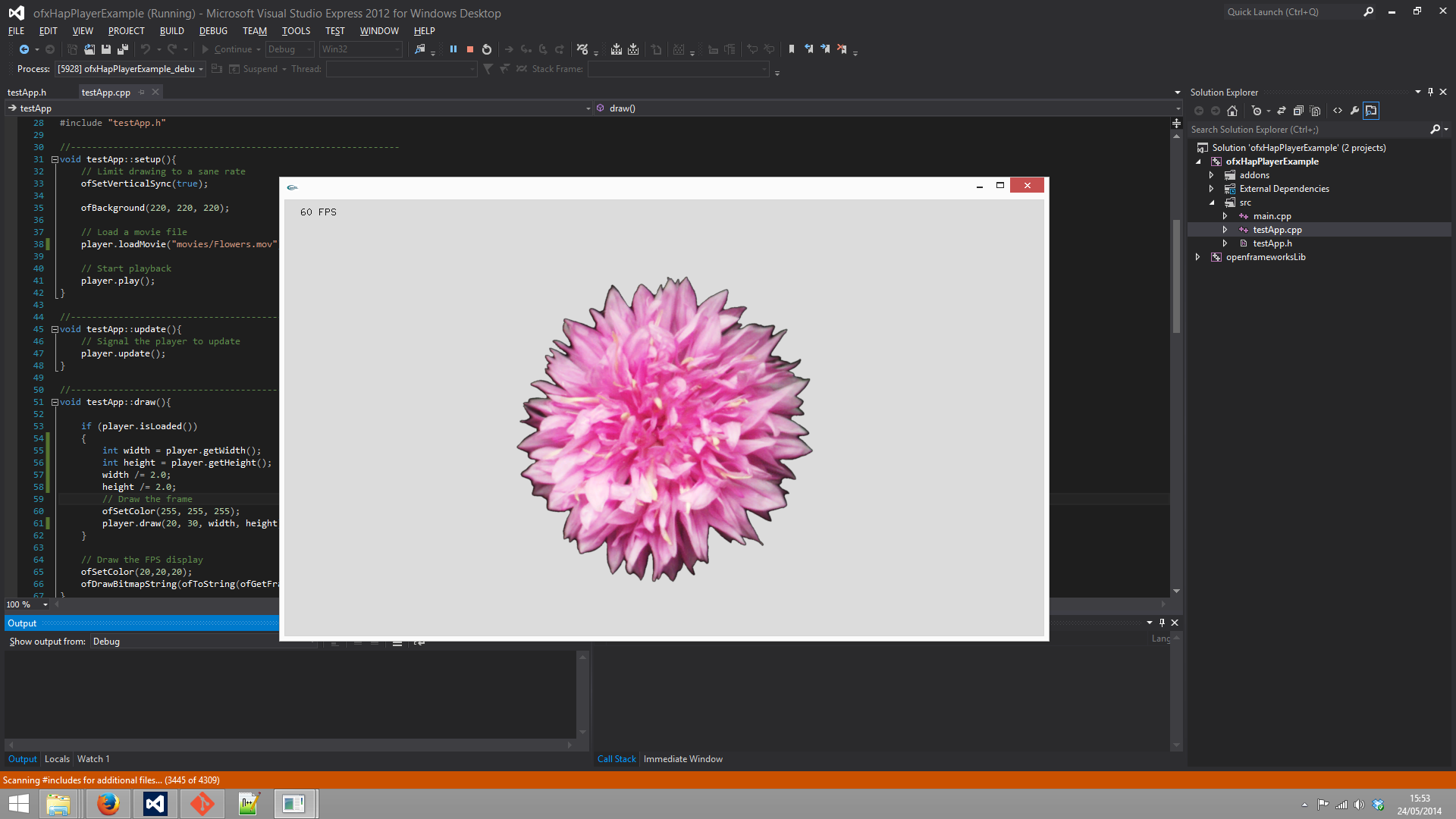
Introducing ISF Video Generators and FX
ISF stands for "Interactive Shader Format", and is a file format that describes a GLSL fragment shader, as well as how to execute and interact with it. The goal of this file format is to provide a simple and minimal interface for image filters and generative video sources that allows them to be interacted with and reused in a generic and modular fashion. ISF is nothing more than a [slightly modified] GLSL fragment shader with a JSON blob at the beginning that describes how to interact with the shader (how many inputs/uniform variables it has, what their names are, what kind of inputs/variables they are, that sort of thing). ISF isn't some crazy new groundbreaking technology- it's just a simple and useful combination of two things that have been around for a while to make a minimal- but highly effective- filter format.
Read MoreMore about the Hap codecs + Free Sample Clip Set by Momo The Monster and Middlman
To celebrate the recent adoption of the Hap video codecs by a number of our fellow Mac VJ apps, today we're sharing a set of royalty free A/V oops created by Momo The Monster and Middlman titled 'pacificCoast' that highlight the use of transparency when compositing layers. The clips are available pre-encoded in Hap 1080p and Hap 480p, and include a VDMX project that demonstrates how to get the most out of the using movies that contain alpha channels.
Read MorePresenting Hap, a family of open-source GPU accelerated video codecs
Today we are happy to share the fruits of a collaboration with Tom Butterworth that has been in the works for about a year now: Hap, a new video codec designed specifically for digital video artists and Mac VJs with the goal of achieving higher-performance video playback in OpenGL-based applications such as VDMX.
Instead of using the CPU to decode video frames, Hap passes compressed image data directly to your computer's graphics card for hardware accelerated decompression of movies during playback. By shifting this burden from your CPU to your GPU, Hap makes it possible to use more movies at higher resolutions than typical CPU-bound codecs.
Hap comes in three different flavors to meet the needs of real-world usage: Hap, Hap Alpha, and Hap Q. Hap offers the lowest data-rates for playing back the most clips at a time. Hap Alpha is similar to Hap, but adds support for transparency. Hap Q encodes at a higher data-rate to achieve significantly cleaner images when quality is a priority over performance and file size.
Click to read more about Hap...
Read More

